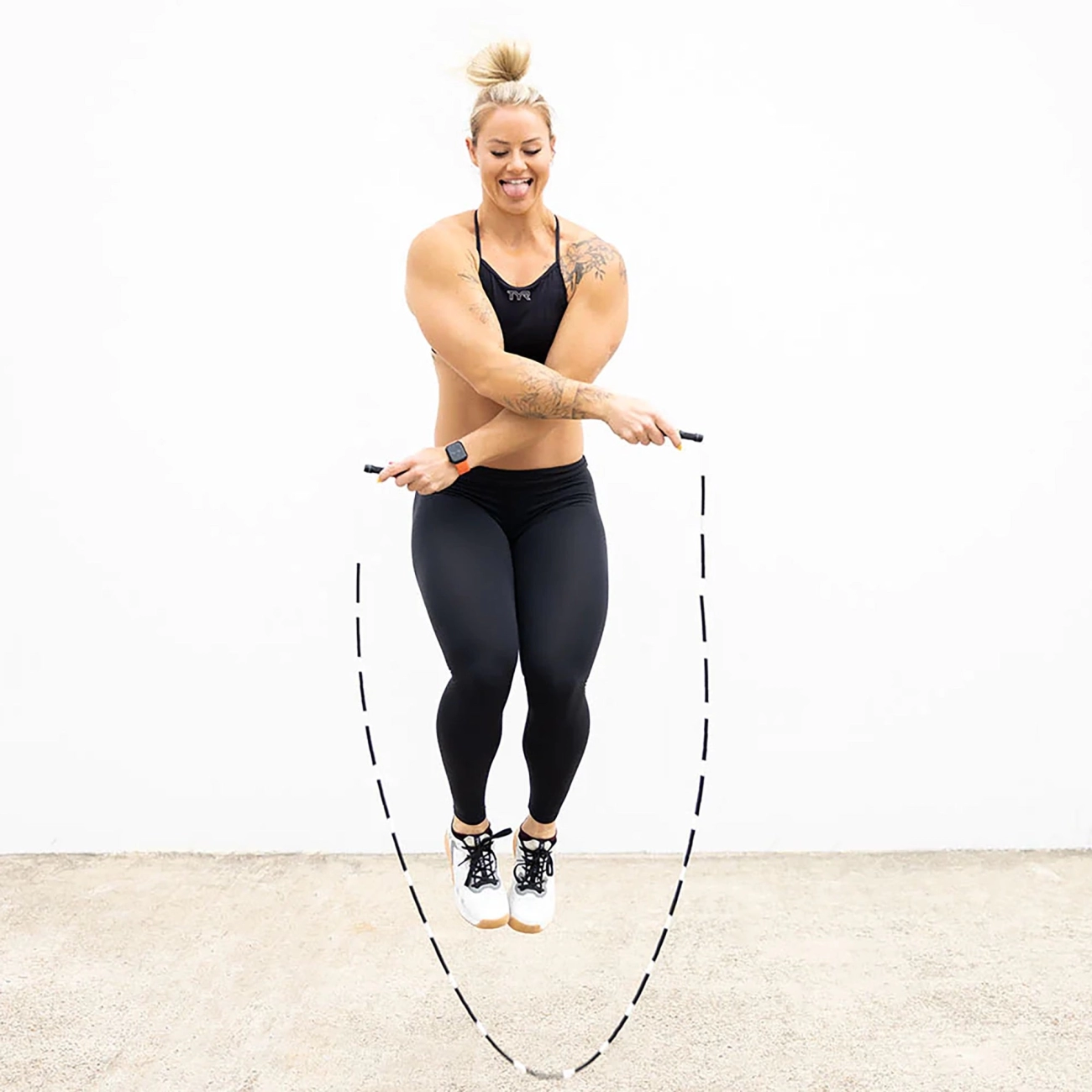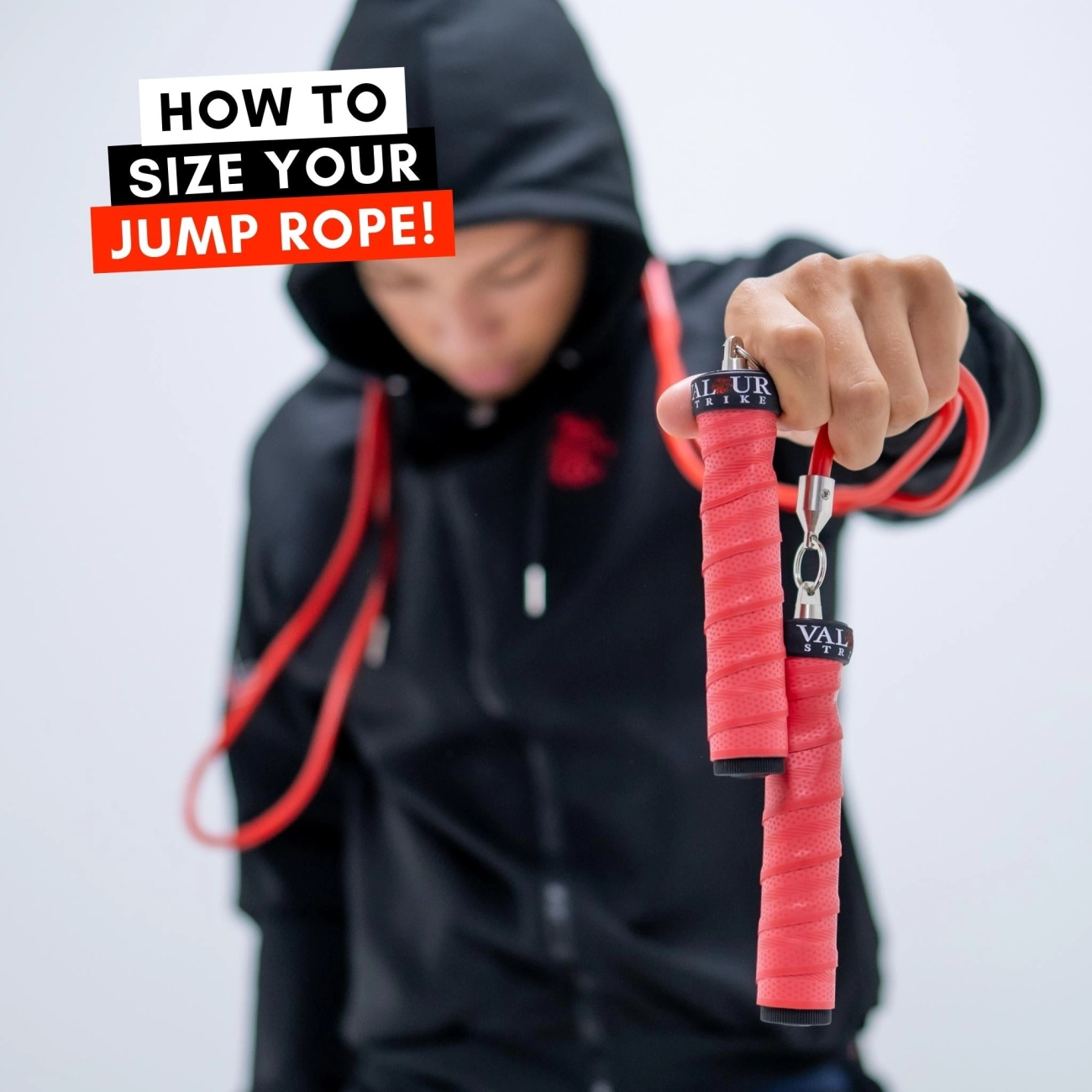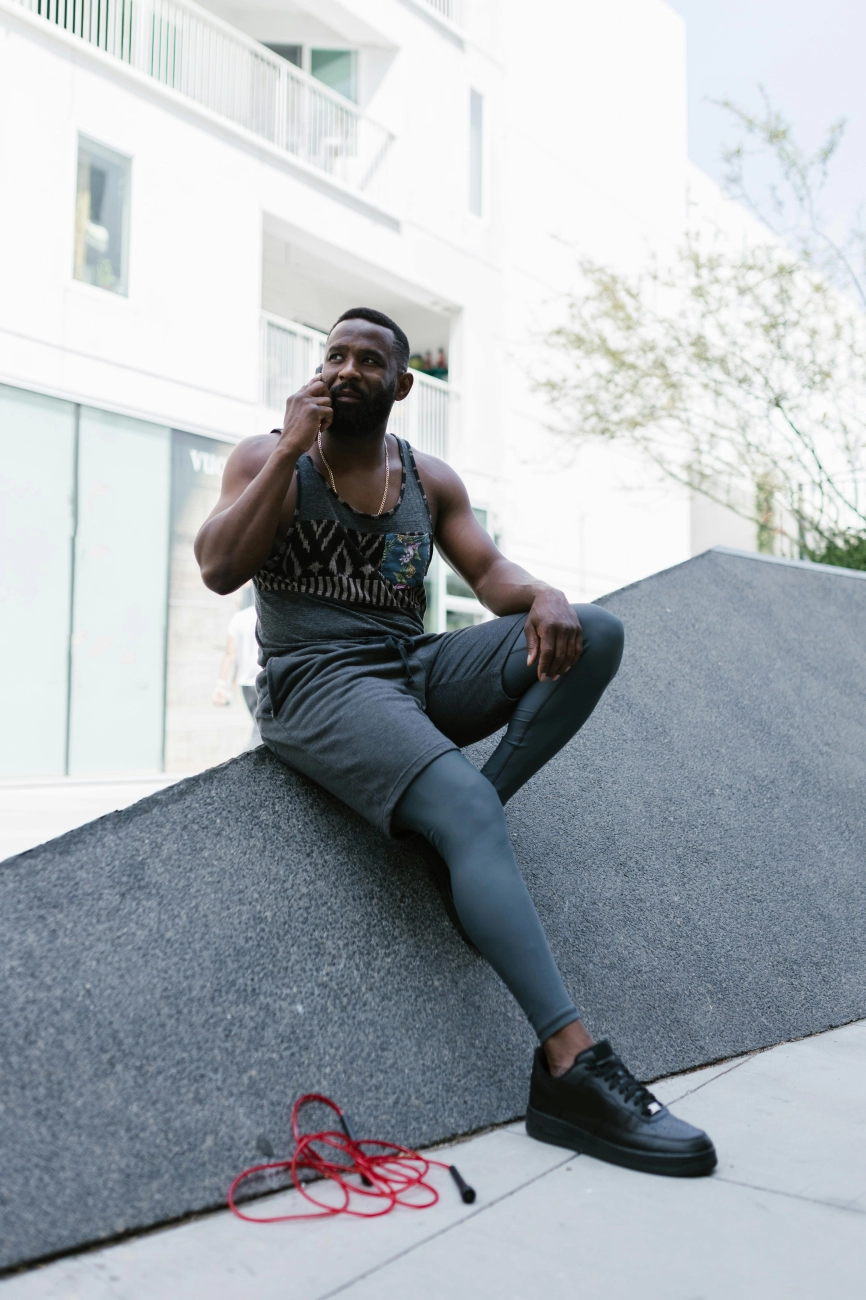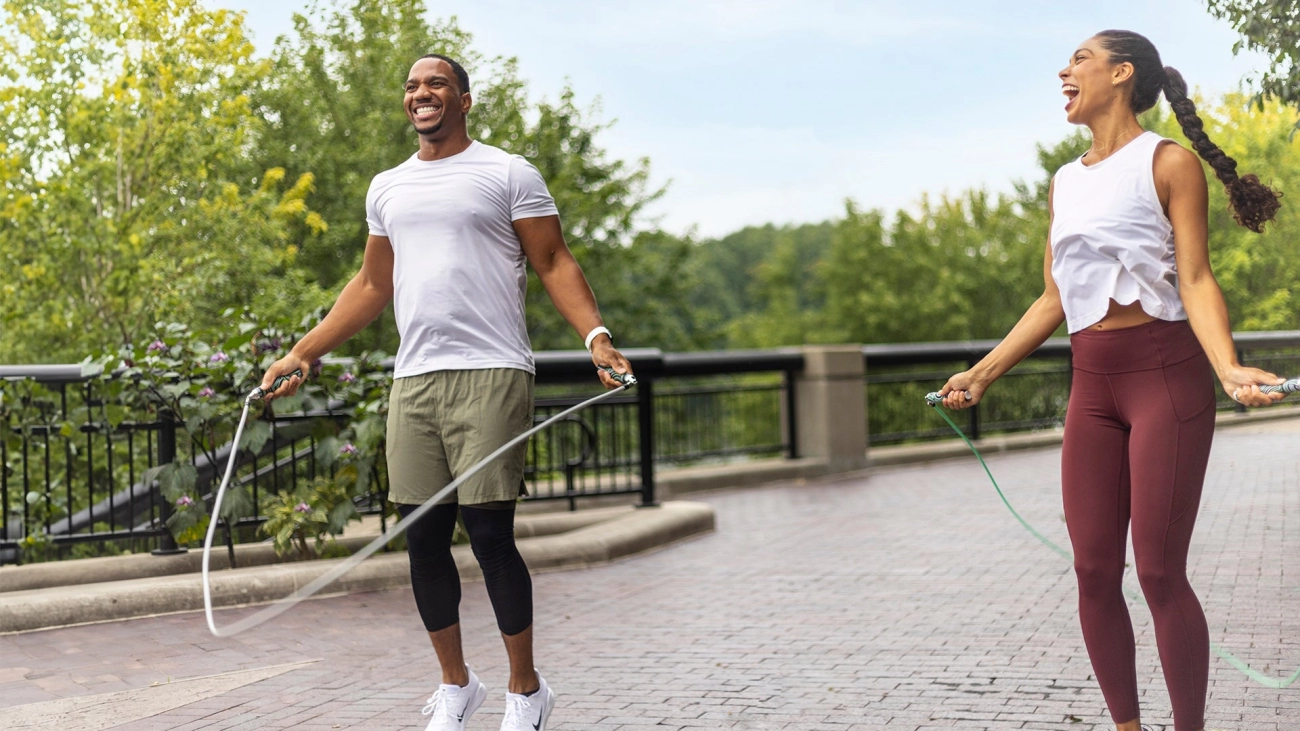Why Skipping Rope Length Matters
Choosing the right skipping rope length is crucial for your overall skipping experience. It directly influences your technique, comfort, and injury prevention, making a big difference whether you are just starting or already advanced.
Impact on Skipping Technique and Comfort
When your rope is too long or too short, it disrupts your rhythm and forces awkward body movements. This can cause:
- Tripping or hitting the rope more often
- Unnatural arm and wrist positions
- Extra strain on joints leading to discomfort or injury
A properly sized rope allows smooth, efficient rotations, helping you maintain balance and proper form. This means you can skip longer and enjoy better body mechanics.
Injury Prevention Benefits
Using the correct length reduces unnecessary stress on knees, ankles, and wrists. A rope that’s either too long or too short:
- Increases the chance of catching your feet or stumbling
- Forces compensation that may lead to muscle strain
- Lowers your ability to control your jumps, raising injury risk
Correct rope length supports a natural jumping style, making skipping safer and more enjoyable.
Differences for Beginners vs Advanced Jumpers
- Beginners benefit from slightly longer ropes, giving extra clearance and time to build timing and coordination without tripping constantly.
- Advanced jumpers often prefer shorter ropes for increased speed, tighter rhythm, and performing skills like double unders or freestyle tricks.
Choosing rope length with your skill level in mind boosts your practice efficiency and progression.
Effects on Speed, Rhythm, and Workout Efficiency
The rope length directly influences how fast and smoothly you can jump:
- Too long slows your rotation, breaking rhythm and reducing workout intensity
- Too short ropes can feel rushed, causing missed jumps and fatigue
- Ideal length supports consistent, quick turns that maximize calorie burn and endurance
Getting this right means your workouts will be more effective, enjoyable, and less frustrating — critical for sticking with your fitness goals.
By understanding why skipping rope length matters and how it affects your workout, you can choose the perfect rope to match your height, skill, and style right from the start. For a great starter option, check out our 7-foot skipping rope and find the length that fits you best.
How to Determine the Right Skipping Rope Length for Your Height and Style

Finding the correct skipping rope length is key to improving your technique and workout efficiency. Here’s how to get it right:
Simple Measuring Methods for Skipping Rope Length
A straightforward way to measure your rope without formulas is to:
- Stand on the middle of the rope with one foot
- Pull the handles straight up alongside your body
- The rope handles should reach about your armpits—this is a good starting point.
This quick test works for most jump styles and skill levels.
Height-Based Formulas and Recommendations
If you prefer formulas, the most common one is:
- Rope length = Your height × 1.5
For example, if you’re 5’6” tall (66 inches), a good rope length is approximately 99 inches (8 feet 3 inches). This usually fits beginners and casual jumpers.
Other popular recommendations include:
- Height x 1.57 (more precise for advanced jumpers)
- Fixed ropes for certain heights listed in size charts (we’ll cover that in detail later)
These formulas give you a reliable starting point, but individual preferences vary.
Step-by-Step Measuring Process
- Stand on the center of your skipping rope.
- Pull the handles upward alongside your torso.
- Check where the handles reach:
- Beginner: Around armpits
- Intermediate: Near lower ribs
- Advanced (double unders or freestyle): Around waist or just below
- Mark or pinch the rope at the right length.
- Adjust the rope accordingly by trimming or knotting (explained later).
Adjusting Rope Length for Different Jump Styles
Different workout styles call for subtle length changes:
- Basic Bounce (slow steady jumps): Slightly longer rope for ease and timing, usually reaching just below armpits.
- Double Unders (rope passes twice per jump): Shorter rope, closer to waist height, allows faster rotations and better control.
- Freestyle or Speed Jumping: Length varies based on skill, generally shorter ropes improve speed and rhythm.
Tip: Start longer if you’re new, then gradually shorten as your skills improve. This prevents tripping and promotes a smooth skipping rhythm.
By measuring carefully and adjusting based on your height and workout style, you set yourself up for better performance and fewer mistakes. Next, we’ll look at exact rope length recommendations based on different heights.
Skipping Rope Length Recommendations Based on Height
Finding the right skipping rope length for your height is key to an efficient and comfortable jump rope workout. While personal preference and skill level play roles, there’s a solid starting point based on your height to help you pick the right rope size.
Skipping Rope Size Chart by Height
Here’s a straightforward guide showing recommended rope lengths in both feet and centimeters:
| User Height (inches) | User Height (cm) | Recommended Rope Length (feet) | Recommended Rope Length (cm) |
|---|---|---|---|
| 48 – 54 | 122 – 137 | 7 ft | 213 cm |
| 54 – 60 | 137 – 152 | 8 ft | 244 cm |
| 60 – 66 | 152 – 168 | 9 ft | 274 cm |
| 66 – 72 | 168 – 183 | 10 ft | 305 cm |
| 72 – 78 | 183 – 198 | 11 ft | 335 cm |
Notes About Personal Preference and Adjustments
- Comfort matters: If the rope feels a bit long or short at first, feel free to trim or adjust it slightly.
- Skill level impacts choice: Beginners often do better with a slightly longer rope to give room for mistakes, while advanced jumpers might prefer shorter ropes for speed and tighter control.
- Jump style considerations: For double unders or freestyle tricks, a little extra rope length can help with control and timing, but too much length can slow you down.
- Use the table as a starting point to find your rope length.
- Expect to fine-tune your rope based on how you feel and the type of skipping you do.
- Remember, a properly sized jump rope prevents tripping and improves your workout efficiency.
By pairing your height with the right rope length, you’re already one step closer to a smooth and effective skipping routine.
Types of Skipping Ropes and Their Length Adjustability

When choosing the best skipping rope length for height and skill, it’s important to know the different types of ropes and how easily you can adjust their length. Each type serves a specific purpose, and the ability to tailor the length varies.
Common Skipping Rope Types
-
Beaded Ropes
These have segmented plastic beads over a nylon cord. They’re durable and great for beginners because the beads add weight and feedback. Length adjustment is possible but usually requires untying knots and trimming the cord inside the handles.
-
Speed Ropes
Made from thin PVC or wire cables, these ropes are designed for fast skipping and advanced tricks like double unders. Many speed ropes feature adjustable cables with screws or clamps inside the handles, letting you tailor the length easily without cutting.
-
Weighted Ropes
These come with added weights either in the handles or along the rope to boost workout intensity. Weighted ropes vary in adjustability; some allow length changes like speed ropes, while others are fixed length and not designed for trimming.
-
Leather Ropes
Preferred for smooth skipping and durability, leather ropes are common in boxing training. Adjustability depends on the model—some include adjustable handles or clamps, while others require knotting or cutting to shorten the length.
-
Wire Cable Ropes
Wire cables coated with PVC or plastic combine speed and durability. Adjustable versions are easy to tailor with screws/clamps on the handles—perfect for finding the correct rope length for jump rope workouts.
Which Types Are Most Adjustable
- Speed ropes and wire cable ropes from JumpRopeWholesale are generally the easiest to adjust. They often come with quick-adjust systems that allow you to change length without damage.
- Beaded ropes are adjustable but may take more work to shorten.
- Weighted and leather ropes may require knotting or cutting, so adjust carefully to avoid ruining the rope.
How to Tailor Jump Rope Length with JumpRopeWholesale Products
- Locate the adjustment screws or clamps inside the handle.
- Loosen the clamp to pull or release extra rope length.
- Use scissors or a sharp blade to trim the rope only after confirming the fit — too short can limit your workout, too long causes tripping.
- For temporary fixes, tie a secure knot at the desired point inside the handle to shorten without cutting.
- After adjusting, test the rope with a few jumps to ensure the length matches your height and style.
Tips for Adjusting Rope Length
- Follow your height using the Ideal jump rope length by height recommendations.
- Adjust based on your skipping style:
- Longer for freestyle and tricks
- Shorter for speed and double unders
- Recheck rope length after initial use for comfort and efficiency.
JumpRopeWholesale offers a wide range of high-quality, adjustable ropes designed for US customers seeking the perfect fit. Their product line supports various workout styles, making it easy to find and customize the best skipping rope length for you.
Common Mistakes When Choosing Skipping Rope Length

Picking the wrong skipping rope length can seriously mess up your workout. Here are the most common mistakes people make and why they matter:
Using a Rope That’s Too Long or Too Short
- Too long ropes cause frequent tripping, which breaks your flow and can lead to frustration or even injury. You’ll waste energy trying to clear the rope instead of focusing on your jumps.
- Too short ropes make it hard to swing properly, leading to poor form and unnecessary fatigue. You might jump higher than needed or tense up your shoulders, increasing strain.
Ignoring Personal Height and Skill Level
- Your height is the baseline, but skill level impacts the ideal rope length. Beginners often do better with slightly longer ropes for easier timing, while advanced jumpers prefer shorter ropes for speed and control.
- Overlooking this means you might struggle unnecessarily or limit progress by not using a rope suited to your current ability.
Not Adjusting the Rope After Purchase
- A skipping rope is rarely perfect right out of the box. Failing to adjust or trim the rope after buying it can lead to the problems above.
- Adjustable ropes are great, but only if you take the time to tailor them to your height and jumping style.
of Mistakes to Avoid
- Using an unfit rope length can cause tripping, poor rhythm, frustration, fatigue, and injury.
- Don’t ignore your height and skill when choosing rope length.
- Always adjust or customize your skipping rope for the best performance and safety.
Making these corrections upfront will improve your skipping experience, workout efficiency, and reduce injury risk. For tips on adjusting your rope length the right way, check our guide on Jump Rope Length Adjustment Tips.
How to Adjust and Test Your Skipping Rope Length
Getting your skipping rope length right is key for a smooth, injury-free workout. Here’s how to safely adjust and test your rope length so it fits your needs, whether you’re just starting or perfecting your technique.
Safe Ways to Trim or Shorten Your Skipping Rope
If your rope feels too long, trimming it properly is the best option for a clean, lasting adjustment.
- Gather your tools: Sharp scissors or wire cutters (depending on rope type), a lighter (for synthetic ropes), tape measure, and a marker.
- Measure and mark: Put the rope under your feet, pull the handles up to your armpits, then mark the extra length.
- Cut carefully: Trim a bit less than the measured excess—you can always cut more later.
- Seal the ends (for PVC or cable ropes): Use a lighter briefly to melt synthetic rope ends so they don’t fray.
- Reattach handles: Some ropes have removable handles — reinsert or clamp the rope securely.
Knots for Temporary Rope Length Adjustment
If you’re not ready to cut or want to switch between jump styles, tying a knot is a quick fix:
- Tie a simple overhand knot near the handles to shorten the rope.
- Keep knots tight and close to prevent slipping during workouts.
- Remember, knots add a slight bump—best for practice, not advanced routines.
How to Test Your Adjusted Skipping Rope
After adjusting your rope, it’s crucial to test it before full use:
- Start slow: Jump at a relaxed pace to get a feel for the new length.
- Check clearance: The rope should clear your feet easily without tripping.
- Watch your form: No need to lean forward or strain your wrists—your body should feel natural.
- Try different jump styles: Basic bounce, double unders, and freestyle moves all require slightly different lengths or handle control. Adjust further if needed.
- Use a mirror or record yourself to spot rope drag or awkward posture issues.
Checklist for Adjusting and Testing Rope Length
- Measure rope length precisely; cut only the extra length needed
- Seal synthetic rope ends to prevent fraying
- Use knots for quick, temporary shortening if needed
- Test by jumping slowly; check clearance and comfort
- Make small adjustments based on jump style and skill
Fine-tuning your skipping rope length not only improves your workout efficiency but reduces the risk of tripping and injury. Taking the time to adjust and test sets you up for better rhythm and speed, whatever your workout goals.
Frequently Asked Questions About Skipping Rope Length
Can I Use the Same Rope for Different Workout Types
Yes, you can use the same skipping rope for various workouts like basic jumps, speed training, or freestyle. However, the rope length might need tweaking depending on your routine. For example:
- Basic bounce: A slightly longer rope offers more clearance and comfort.
- Double unders or speed work: A shorter rope helps increase rotation speed.
- Freestyle tricks: You may prefer a rope adjusted for better control and precision.
So while one rope can serve many purposes, adjusting the length ensures better performance and reduces tripping or fatigue.
How Often Should I Adjust or Replace My Skipping Rope
- Adjust rope length whenever you switch workout styles or if you feel the rope is tripping too much.
- If you’ve recently gained or lost height, tweak the length to stay comfortable.
- Replace your rope every 6 to 12 months, depending on usage and wear. High-intensity workouts or outdoor use can wear ropes faster.
- Regularly check for frayed wires or damaged segments, especially in wire or cable ropes.
Keeping your rope at the right length and in good shape helps prevent injury and keeps your workout efficient.
Does Rope Length Affect Calorie Burn
Yes, rope length can impact workout intensity and calorie burn, but indirectly:
- A properly sized rope allows smoother, faster skipping, letting you maintain a higher pace.
- If the rope is too long or too short, you’ll trip or lose rhythm, lowering workout quality.
- Faster, consistent skipping with the right rope length burns more calories in less time.
So while rope length doesn’t directly burn calories, choosing the correct skipping rope length improves your workout efficiency and calorie burn potential.
- Use one rope for multiple workouts but adjust length for best results.
- Adjust or replace your rope regularly for comfort and safety.
- The right rope length helps maintain speed and rhythm, boosting your calorie burn.
Why Buy Your Skipping Rope from JumpRopeWholesale
When it comes to finding the best skipping rope length for height and quality, JumpRopeWholesale stands out as a reliable choice for U.S. customers. Here’s why:
High Quality Skipping Ropes Built to Last
At JumpRopeWholesale, every rope is crafted with durable materials like PVC, beaded segments, leather, and wire cables. This ensures your rope won’t wear out quickly, giving you consistent performance whether you’re a beginner or advanced jumper. Our ropes maintain smooth rotation and balanced weight, which directly improves your workout efficiency.
Wide Range of Lengths and Adjustable Options
Finding the correct rope length for jump rope workouts is easier here. We offer a variety of sizes, plus many ropes come with adjustable lengths to fit your height and jumping style perfectly. From the simple height-based formulas to custom adjustments for moves like double unders and freestyle, our ropes can get you set up right without hassle.
Customization and OEM/ODM Services
Need something specific? JumpRopeWholesale is also a manufacturer offering OEM/ODM services, so you can customize ropes in bulk with your own brand or tailored features. This is ideal for gyms, training centers, or resale shops looking for high-quality skipping ropes suited to American market demand.
Customer Support You Can Count On
We back our products with excellent customer service. Whether you’re unsure about rope length, how to adjust your rope, or need help choosing the right type, our team is ready to assist. Many customers have shared positive feedback praising our responsiveness and product reliability.
Proven Satisfaction and Success Stories
Our customers consistently report improvements in skipping rhythm, reduced tripping, and better workout results after switching to JumpRopeWholesale ropes. These testimonials highlight how the ideal jump rope length by height and quality equipment make a real difference.
Choosing JumpRopeWholesale means you’re investing in top-notch skipping ropes tailored for the U.S. fitness market, backed by customization options and friendly support. That’s why so many jump rope enthusiasts trust us for their skipping needs.



